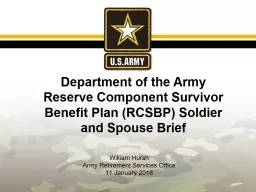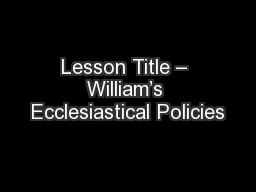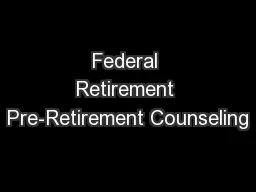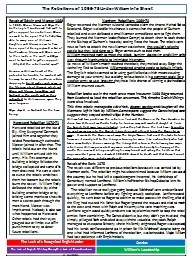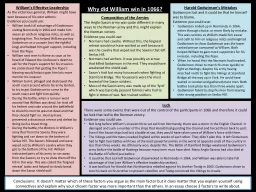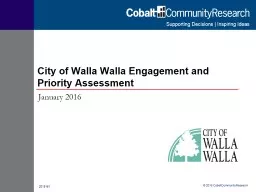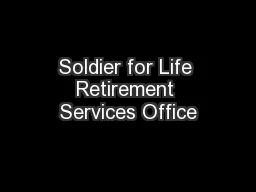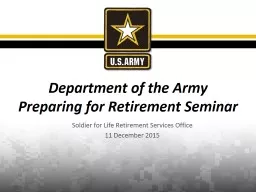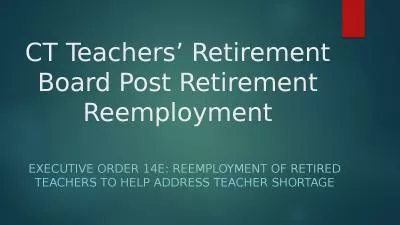PPT-William Hursh Army Retirement Services Office 11 January 2018
Author : yoshiko-marsland | Published Date : 2019-11-01
William Hursh Army Retirement Services Office 11 January 2018 Department of the Army Reserve Component Survivor Benefit Plan RCSBP Soldier and Spouse Brief CHANGE
Presentation Embed Code
Download Presentation
Download Presentation The PPT/PDF document "William Hursh Army Retirement Services O..." is the property of its rightful owner. Permission is granted to download and print the materials on this website for personal, non-commercial use only, and to display it on your personal computer provided you do not modify the materials and that you retain all copyright notices contained in the materials. By downloading content from our website, you accept the terms of this agreement.
William Hursh Army Retirement Services Office 11 January 2018: Transcript
Download Rules Of Document
"William Hursh Army Retirement Services Office 11 January 2018"The content belongs to its owner. You may download and print it for personal use, without modification, and keep all copyright notices. By downloading, you agree to these terms.
Related Documents

